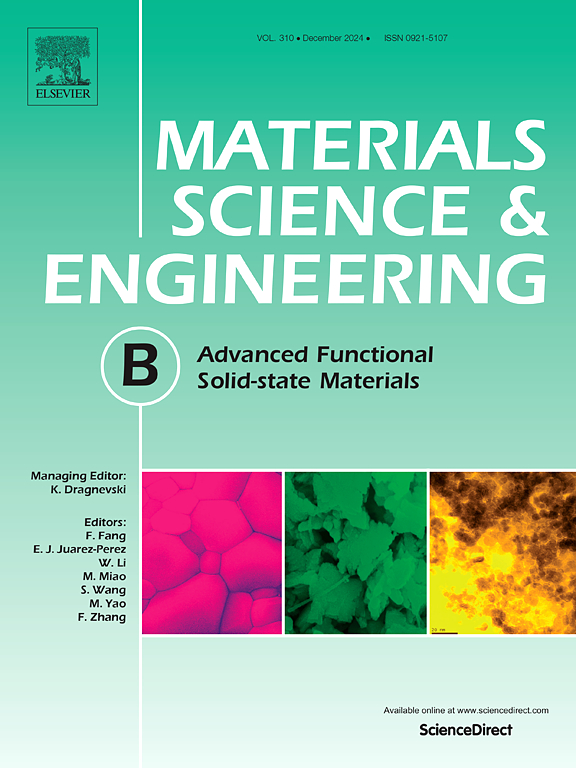阳离子无序(LixNa1-x)2Te合金的结构、电子和光学性能
IF 3.9
3区 材料科学
Q2 MATERIALS SCIENCE, MULTIDISCIPLINARY
引用次数: 0
摘要
采用杂化泛函方法研究了(LixNa1-x)2Te合金的性能。结果表明(LixNa1-x)2Te合金为直接间隙半导体。随着合金成分的变化,合金带隙随弯曲参数呈非线性变化(- 0.78 eV)。当Li含量达到0.50时,(Li0.5Na0.5)2Te合金的空穴(电子)有效质量降至0.314 (0.233)m0,空穴减少约80.0%。光学性能表明(Li0.5Na0.5)2Te合金具有较低的吸收率和反射率,在可见光区具有优异的透过率。混合焓和弹性常数验证了(LixNa1-x)2Te合金是可以通过实验合成的,并且具有环境下的力学稳定性。这些发现突出了(Li0.5Na0.5)2Te合金作为一种有前途的透明导电材料的潜力。本文章由计算机程序翻译,如有差异,请以英文原文为准。
The structural, electronic and optical properties of cation-disordered (LixNa1-x)2Te alloys
The properties of (LixNa1-x)2Te alloys are studied by using the hybrid functionals method. Obtained results indicate (LixNa1-x)2Te alloys are direct gap semiconductors. As the alloy composition changes, the band gap of the alloys exhibits a nonlinear variation with the bowing parameter (−0.78 eV). When the Li composition reaches 0.50, the hole (electron) effective mass of (Li0.5Na0.5)2Te alloy reduces to 0.314 (0.233) m0, indicating approximate 80.0 % decrease in hole. Moreover, the optical properties show (Li0.5Na0.5)2Te alloy possess low absorptivity and reflectivity, together with excellent transmittance in the visible light region. The mixing enthalpies and elastic constants verify that (LixNa1-x)2Te alloy can be synthesized experimentally and possess mechanical stability under ambient environments. These findings highlight the potential of the (Li0.5Na0.5)2Te alloy as a promising transparent conducting material.
求助全文
通过发布文献求助,成功后即可免费获取论文全文。
去求助
来源期刊

Materials Science and Engineering: B
工程技术-材料科学:综合
CiteScore
5.60
自引率
2.80%
发文量
481
审稿时长
3.5 months
期刊介绍:
The journal provides an international medium for the publication of theoretical and experimental studies and reviews related to the electronic, electrochemical, ionic, magnetic, optical, and biosensing properties of solid state materials in bulk, thin film and particulate forms. Papers dealing with synthesis, processing, characterization, structure, physical properties and computational aspects of nano-crystalline, crystalline, amorphous and glassy forms of ceramics, semiconductors, layered insertion compounds, low-dimensional compounds and systems, fast-ion conductors, polymers and dielectrics are viewed as suitable for publication. Articles focused on nano-structured aspects of these advanced solid-state materials will also be considered suitable.
 求助内容:
求助内容: 应助结果提醒方式:
应助结果提醒方式:


